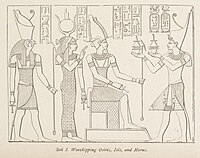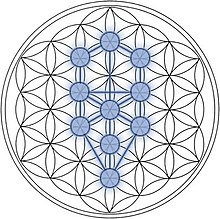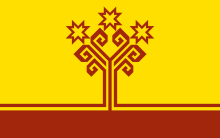Categories
- Tree of Life Necklace62
- Chiming Tree of Life Necklace4
- Tree of Life Bracelet19
- Tree of Life Earrings15
- Tree of Life Rings6
- Silver Chains & Necklace Cords2
- Tree of Life Pendant52
- Wooden Tree Of Life Necklaces4
- Gemstone Pendants22
- Tree of Life Key Rings
- More JEWELRY6
- New Products ...
- Featured Products ...
- All Products ...
New Products [more]

Sterling Silver Necklace with Pendant Featuring Black Shell
Sale: $32.20
Save: 30% off
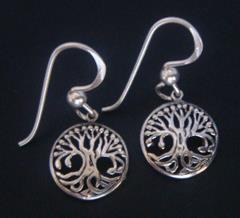
Tree Of Life Earrings Celtic Design | Sterling Silver | 12mm
Sale: $24.47
Save: 30% off
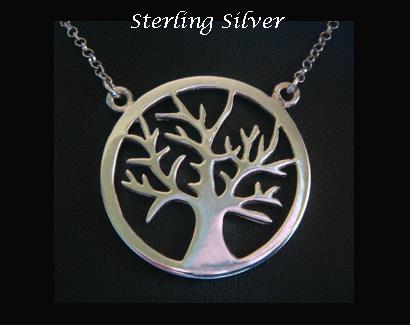
Tree Of Life Necklace, Stunning, Sterling Silver with 50cm Chain
Sale: $31.47
Save: 30% off
Featured [more]
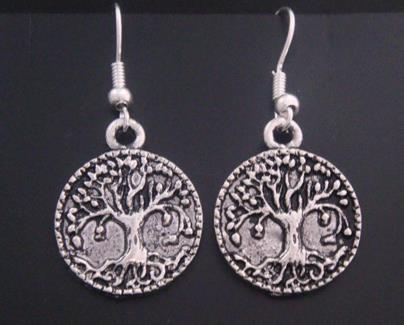
Tree of Life Earrings, Tibetan Silver in Classic Celtic Design
Sale: $6.27
Save: 30% off
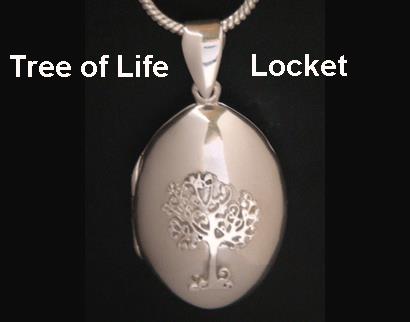
Locket | Tree of Life Locket with Sterling Silver TOL Pendant
Sale: $52.47
Save: 30% off
Tree of Life Meaning
The symbolism of the 'Tree of Life' and the meaning of the tree of life encompasses many religions and cultures throughout the world, emanating at different times throughout history, with a commonality rarely seen in other forms of symbolism.
The following description of the 'Tree of Life Meaning' is an extract from Wiki and is reprinted under the Creative Commons Attribution-ShareAlike License. Additional information can be found at TreeofLife.net.au.
Tree of life
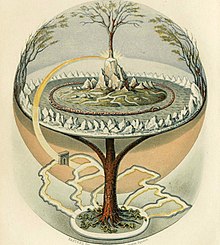
The concept of a tree of life has been used in science, religion, philosophy, and mythology. A tree of life is a common motif in various world theologies, mythologies, and philosophies. It alludes to the interconnection of all life on our planet and serves as a metaphor for common descent in the evolutionary sense. The term tree of life may also be used as a synonym for sacred tree.[1]
The tree of knowledge, connecting to heaven and the underworld, and the tree of life, connecting all forms of creation, are both forms of the world tree or cosmic tree, according to the Encyclopædia Britannica,[2] and are portrayed in various religions and philosophies as the same tree.[3]
Religion and mythology
Various trees of life are recounted in folklore, culture and fiction, often relating to immortality or fertility. They had their origin in religious symbolism.
Ancient Egypt
In Egyptian mythology, in the Ennead system of Heliopolis, the first couple, apart from Shu and Tefnut (moisture and dryness) and Geb and Nuit (earth and sky), are Isis and Osiris. They were said to have emerged from the acacia tree of Iusaaset, which the Egyptians considered the tree of life, referring to it as the "tree in which life and death are enclosed." A much later myth relates how Set killed Osiris, putting him in a coffin, and throwing it into the Nile, the coffin becoming embedded in the base of a tamarisk tree.[4]
The Egyptians' Holy Sycamore also stood on the threshold of life and death, connecting the two worlds.
Armenia
In ancient Armenia, the Tree of Life was a religious symbol and was drawn on walls of fortresses and carved on the armor of warriors. The branches of the tree were equally divided on the right and left sides of the stem, with each branch having one leaf, and one leaf on the apex of the tree. Servants stood on each side of the tree with one of their hands up as if they are taking care of the tree.
Assyria
The Assyrian Tree of Life was represented by a series of nodes and criss-crossing lines. It was apparently an important religious symbol, often attended to by eagle-headed gods and priests, or the King. Assyrilogists have not reached consensus as to the meaning of this symbol. It is multi-valent. The name "Tree of Life" has been attributed to it by modern scholarship; it is not used in the Assyrian sources. In fact, no textual evidence pertaining to the symbol is known to exist.
Baha'i Faith
The concept of the tree of life appears in the writings of the Baha'i Faith, where it can refer to the Manifestation of God, a great teacher who appears to humanity from age to age. The concept can be broken down still further, with the Manifestation as the roots and trunk of the tree and his followers as the branches and leaves. The fruit produced by the tree nourishes an ever-advancing civilization.
A distinction has been made between the tree of life and the tree of the knowledge of good and evil. The latter represents the physical world with its opposites, such as good and evil and light and dark. In a different context from the one above, the tree of life represents the spiritual realm, where this duality does not exist.[5]
China
In Chinese mythology, a carving of a Tree of Life depicts a phoenix and a dragon; the dragon often represents immortality. A Taoist story tells of a tree that produces a peach every three thousand years. The one who eats the fruit receives immortality.
An archaeological discovery in the 1990s was of a sacrificial pit at Sanxingdui in Sichuan, China. Dating from about 1200 BCE, it contained three bronze trees, one of them 4 meters high. At the base was a dragon, and fruit hanging from the lower branches. At the top is a strange bird-like (phoenix) creature with claws. Also found in Sichuan, from the late Han dynasty (c 25 – 220 CE) is another tree of life. The ceramic base is guarded by a horned beast with wings. The leaves of the tree are coins and people. At the apex is a bird with coins and the Sun.
Christianity
In addition to the Hebrew Bible verses, the tree of life is symbolically described in the Book of Revelation as having curing properties: "the angel showed me the river of the water of life, as clear as crystal, flowing from the throne of God and of the Lamb down the middle of the great street of the city. On each side of the river stood the tree of life, bearing twelve crops of fruit, yielding its fruit every month. And the leaves of the tree are for the healing of the nations." (Revelation 22:1-2)
In Catholic Christianity, the Tree of Life represents the immaculate state of humanity free from corruption and Original Sin before the Fall. Pope Benedict XVI has said that "the Cross is the true tree of life." [6] Saint Bonaventure taught that the medicinal fruit of the Tree of Life is Christ himself.[7] Saint Albert the Great taught that the Eucharist, the Body and Blood of Christ, is the Fruit of the Tree of Life.[8]
In Eastern Christianity the tree of life is the love of God.[9]
The Church of Jesus Christ of Latter-day Saints
The tree of life appears in the Book of Mormon in a revelation to Lehi (see 1 Nephi 8:10). It is symbolic of the love of God (see 1 Nephi 11:21-23). Its fruit is described as "most precious and most desirable above all other fruits," which "is the greatest of all the gifts of God" (see 1 Nephi 15:36). In another scriptural book, salvation is called "the greatest of all the gifts of God" (see Doctrine and Covenants 6:13). In the same book eternal life is also called the "greatest of all the gifts of God" (see Doctrine and Covenants 14:7). Because of these references, the tree of life and its fruit is sometimes understood to be symbolic of salvation and post-mortal existence in the presence of God and his love.
Swedenborgianism
|
|
This section needs additional citations for verification. (September 2011) |
According to Swedenborgianism, the first twelve chapters of Genesis are a symbolic retelling of ancient truths. In his Arcana Coelestia,[10] Emanuel Swedenborg (1688–1772) expounds on the symbolism and underlying spiritual meaning of both Genesis and Exodus. The symbolism regarding the tree of life, according to Emanuel Swedenborg, reflects the perception of our mind (or spirit, which is the same thing according to Swedenborg's philosophy). As the tree (perception) is in the midst of the garden (representing our mind), it represents that part of our mind which is the will (or heart). Thus knowledge of good is absorbed by our will and immediately applied to life (in the case with the tree of life).
The nature of the tree, or quality of the tree, is dependent on our inner state. It is described as the tree of life, when our will is focused on what is good and true (spiritual truths or truths of faith), yet as the tree of knowledge of good and evil, when our will is focussed on mere natural memory knowledges and a 'seeing is believing' attitude. The result of us relying and living our life according to our own understanding is that, from that moment (the eating of the fruit of the tree of knowledge of good and evil) on, we are to rationally consider what to believe and filter with our natural understanding, rather than accepting what is good directly in our will, which was depicted of the Most Ancient people by Adam. Eve then represents a separate will being given to us, and the two (will and understanding) are separated.
In Revelation the tree again appears in the middle of the garden (taking the entire Bible as a spiritual symbolic journey of self discovery and improvement (spiritual growth - also called regeneration), which provides then that the leaves are for the healing (which is that the truths which can be understood) are able to be applied to one's spiritual life for the betterment of our character, "healing" our innate selfish tendencies. It takes a whole cycle of self-discovery and rejection of our negative self, to see the tree of life back in the middle.
Europe
In Dictionaire Mytho-Hermetiqe (Paris, 1737), Antoine-Joseph Pernety, a famous alchemist, identified the Tree of Life with the Elixir of Life and the Philosopher's Stone.
Contemporary Welsh artist Jen Delyth created a Celtic Tree of Life symbol, in part based on ancient Celtic veneration of trees and traditional Celtic designs.
In Eden in the East (1998), Stephen Oppenheimer suggests that a tree-worshipping culture arose in Indonesia and was diffused by the so-called "Younger Dryas" event of c. 8000 BCE, when the sea level rose. This culture reached China (Szechuan), then India and the Middle East. Finally the Finno-Ugaritic strand of this diffusion spread through Russia to Finland where the Norse myth of Yggdrasil took root.
Georgia
The Borjgali (Georgian: ????????) is an ancient Georgian Tree of Life symbol.
Germanic paganism and Norse mythology
In Germanic paganism, trees played (and, in the form of reconstructive Heathenry and Germanic Neopaganism, continue to play) a prominent role, appearing in various aspects of surviving texts and possibly in the name of gods.
The tree of life appears in Norse religion as Yggdrasil, the world tree, a massive tree (sometimes considered a yew or ash tree) with extensive lore surrounding it. Perhaps related to Yggdrasil, accounts have survived of Germanic Tribes' honouring sacred trees within their societies. Examples include Thor's Oak, sacred groves, the Sacred tree at Uppsala, and the wooden Irminsul pillar. In Norse Mythology, the apples from Iðunn's ash box provide immortality for the gods.
Jewish sources
Etz Chaim, Hebrew for "tree of life," is a common term used in Judaism. The expression, found in the Book of Proverbs, is figuratively applied to the Torah itself. Etz Chaim is also a common name for yeshivas and synagogues as well as for works of Rabbinic literature. It is also used to describe each of the wooden poles to which the parchment of a Sefer Torah is attached.
The tree of life is mentioned in the Book of Genesis; it is distinct from the tree of the knowledge of good and evil. After Adam and Eve fell from God's favour by eating fruit from the tree of the knowledge of good and evil, they were cast out of the Garden of Eden. Remaining in the garden, however, was the tree of life. To prevent access to this tree in the future, two cherubs with a flaming sword were placed at the garden's entrance. (Genesis 3:22-24)
In the Book of Proverbs, the tree of life is associated with wisdom: "[Wisdom] is a tree of life to them that lay hold upon her, and happy is every one that holdest her fast." (Proverbs 3:13-18) In 15:4 the tree of life is associated with calmness: "A soothing tongue is a tree of life; but perverseness therein is a wound to the spirit."[11]
The Book of Enoch, generally considered non-canonical, states that in the time of the great judgment God will give all those whose names are in the Book of Life fruit to eat from the Tree of Life.
Kabbalah
Jewish mysticism depicts the tree of Life in the form of ten interconnected nodes, as an important part of the Kabbalah. As such, it resembles the ten sephirot.
Mesoamerica
The concept of world trees is a prevalent motif in pre-Columbian Mesoamerican cosmologies and iconography. World trees embodied the four cardinal directions, which represented also the fourfold nature of a central world tree, a symbolic axis mundi connecting the planes of the Underworld and the sky with that of the terrestrial world.[12]
Depictions of world trees, both in their directional and central aspects, are found in the art and mythological traditions of cultures such as the Maya, Aztec, Izapan, Mixtec, Olmec, and others, dating to at least the Mid/Late Formative periods of Mesoamerican chronology. Among the Maya, the central world tree was conceived as or represented by a ceiba tree, and is known variously as a wacah chan or yax imix che, depending on the Mayan language.[13] The trunk of the tree could also be represented by an upright caiman, whose skin evokes the tree's spiny trunk.[14]
Directional world trees are also associated with the four Yearbearers in Mesoamerican calendars, and the directional colors and deities. Mesoamerican codices which have this association outlined include the Dresden, Borgia and Fejérváry-Mayer codices.[15] It is supposed that Mesoamerican sites and ceremonial centers frequently had actual trees planted at each of the four cardinal directions, representing the quadripartite concept.
World trees are frequently depicted with birds in their branches, and their roots extending into earth or water (sometimes atop a "water-monster," symbolic of the underworld). The central world tree has also been interpreted as a representation of the band of the Milky Way.[16]
Middle East
The Epic of Gilgamesh is a similar quest for immortality. In Mesopotamian mythology, Etana searches for a 'plant of birth' to provide him with a son. This has a solid provenance of antiquity, being found in cylinder seals from Akkad (2390–2249 BCE).
The Book of One Thousand and One Nights has a story, 'The Tale of Buluqiya', in which the hero searches for immortality and finds a paradise with jewel-encrusted trees. Nearby is a Fountain of Youth guarded by Al-Khidr. Unable to defeat the guard, Buluqiya has to return empty-handed.
North America
In a myth passed down among the Iroquois, The World on the Turtle's Back, explains the origin of the land in which a tree of life is described. According to the myth, it is found in the heavens, where the first humans lived, until a pregnant woman fell and landed in an endless sea. Saved by a giant turtle from drowning, she formed the world on its back by planting bark taken from the tree.
The tree of life motif is present in the traditional Ojibway cosmology and traditions. It is sometimes described as Grandmother Cedar, or Nookomis Giizhig in Anishinaabemowin.
Rastafari
The Rastafari movement[17] and some Coptic Christians[18] consider cannabis to be the Tree of knowledge.It's normally only used for meditation[citation needed].The use of this herb will help to learn the inner-self and helps to clear the inner-self from the Ego(negativity)[citation needed].
Serer religion
In Serer religion, the tree of life as a religious concept forms the basis of Serer cosmogony. Trees were the first things created on Earth by the supreme being Roog (or Koox among the Cangin). In the competing versions of the Serer creation myth, the Somb (prosopis africana, a species of prosopis) and the Saas tree (acacia albida) are both viewed as trees of life.[19] However, the prevailing view is that, the Somb was the first tree on Earth and the progenitor of plant life.[20][21] The Somb was also used in the Serer tumuli and burial chambers, many of which had survived for more than a thousand years.[20] Thus, Somb is not only the Tree of Life in Serer society, but the symbol of immortality.[20]
Turkic world
The World Tree or Tree of Life is a central symbol in Turkic mythology. The blue sky around the tree reflects the peaceful nature of the country and the red ring that surrounds all of the elements symbolizes the ancient faith of rebirth, growth and development of the Turkic peoples.
Science
The tree of life is a metaphor describing the relationship of all life on Earth in an evolutionary context.[22] Charles Darwin talks about envisioning evolution as a "tangled bank" in On the Origin of Species; however, the book's sole illustration is of a branched diagram that is very tree-like.
"From the first growth of the tree, many a limb and branch has decayed and dropped off; and these fallen branches of various sizes may represent those whole orders, families, and genera which have now no living representatives, and which are known to us only in a fossil state. As we here and there see a thin, straggling branch springing from a fork low down in a tree, and which by some chance has been favoured and is still alive on its summit, so we occasionally see an animal like the Ornithorhynchus (Platypus) or Lepidosiren (South American lungfish), which in some small degree connects by its affinities two large branches of life, and which has apparently been saved from fatal competition by having inhabited a protected station. As buds give rise by growth to fresh buds, and these, if vigorous, branch out and overtop on all sides many a feebler branch, so by generation I believe it has been with the great Tree of Life, which fills with its dead and broken branches the crust of the earth, and covers the surface with its ever-branching and beautiful ramifications."—Charles Darwin, On the Origin of Species[23]

The evolutionary relationships of the tree of life were refined using genetic data by the American microbiologist Carl Woese, the discoverer of the domain Archaea and a pioneer in molecular (genetic) methods in evolutionary biology. In February 2009, BBC One broadcast an animated, interactive tree of life as part of its "Darwin Season."
The Tree of Life Web Project is an ongoing Internet project containing information about phylogeny and biodiversity, produced by biologists from around the world. Each page contains information about one group of organisms and is organized according to a branched tree-like form, thus showing relationships between organisms and groups of organisms.
The neuroanatomical term arbor vitae (tree of life) describes the branching pattern between the cortical grey matter and subcortical white matter of the cerebellum.
Popular culture
Art
A 2½ story high "Tree of Life" sculpture by Wisconsin artist Nancy Metz White was installed in Mitchell Boulevard Park in Milwaukee in 2002. The tree is made of brightly painted welded steel and forge flashings recycled from Milwaukee heavy industry. Gustav Klimt portrayed his version of "The Tree of Life" in his very famous painting.
Music
In their album Emissaries the black metal Melechesh make a reference to the Tree of Life in their song "Touching the Spheres of Sephiroth."
American rock band O.A.R. featured a tree of life both on the cover art and on the actual c.d. for the album In Between Now and Then
Double album "Bath"/"Leaving Your Body Map" by avant-garde metal band maudlin of the Well was constructed based upon a parallel qabalistic Tree of Life structure.
The double album Axis Mutatis by the electronic group The Shamen contains in some limited editions the instrumental album "Arbor Bona Arbor Mala." The title refers to the tree of life, the ancient symbol found in virtually all Shamanic cultures, linking the underworld with the earth and the heavens. Also, on the cover of Axis Mutatis appears a representation of the tree of life by William Latham.
The official debut music video MAMA of South Korean-Chinese band EXO has an opening sequence describing the existence of the Tree of Life. The eye of red forces and some other intangible shit is said to covet its heart. The two legends (representing the two halves of EXO: EXO-K, promoting in Korea; and EXO-M, promoting in China)split the Tree in half, overturning time and skewing space in the process. They hid each side of the Heart and created two suns and worlds that look alike. The day that the grounds beget one single file before the sky, the red forces will be purified, the two legends will unite and a new world shall open up. Didn't get it? Well, welcome to the club.
Fiction
| This section does not cite any references or sources. (July 2009) |
Literature
- In George Herbert's poem The Sacrifice (part of The Temple, 1633), the Tree of Life is the rood on which Jesus Christ was crucified.
- In Stephen Donaldson's Chronicles of Thomas Covenant the Unbeliever, The One Tree (or Tree of Life) is the tree from which the Staff of Law was produced.
- In C. S. Lewis' Chronicles of Narnia, the Tree of Life plays a role, especially in the sixth published book (the first in the in-world chronology) The Magician's Nephew
- In Terry Brooks' Shannara series, the Ellcrys, an Elf-turned-tree, plays some sort of role in many of the novels
- In Robert Jordan' Wheel of Time the Tree of Life – "Avendesora" – as the last of its kind plays a pivotal role. This tree also linked to the Buddhist "Bodhi" tree, beneath which the Buddha attained Nirvana
- Tree of Life appears in Larry Niven's Known Space novels
- In the Roger Zelazny's 1978 novel The Chronicles of Amber: The Courts of Chaos prince Corwin encounters Ygg (a nick from Yggdrasil), a tree who speaks and is planted on the border between Order and Chaos, between Amber and Courts of Chaos
- In The Sea of Trolls written by Nancy Farmer, the Tree of Life (Yggdrasil) is a place holding magical powers.
- In Michael Chabon's 2002 novel Summerland, the four great limbs of the Lodgepole – also known as the "Tree of Worlds" and the "Ash o' Ashes" – hold up the four Worlds of the Summerlands, the Winterlands, the Middling, and the Gleaming.
Video games
- The Norse Tree of Life, Yggdrasil, is either featured or referenced in many games, including those of the Tales RPG-series, the 2002 video game Wild Arms 3 and the 2008 video game Too Human.
- In the Atari 2600 game Swordquest: Fireworld, the map of the game world is patterned after the Kabbalah Tree of Life.
- In the 1997 video game Breath of Fire III, Yggdrasil, overseer of the world's forests, features a minor role. The mutant plant Peco, a party member, becomes able to channel Yggdrasil after a time skip of several years, during which Peco made extended visits to Yggdrasil.
- In the 2002 video game Warcraft III: Reign of Chaos, a Tree of Life is the central building of the Night Elf race.
- In the Etrian Odyssey series, a great tree named Yggdrasil is present in all four games, serving as a major plot device to the story.
- In the 2007 video game Dragoneer's Aria, The Great Spirit guards a World Tree.
- In the 2008 video game Prince of Persia, a gigantic, ancient tree in the middle of the desert is used to keep the evil deity Ahriman sealed in a temple at its trunk. This game's story heavily borrows from Zoroastrianism.
- In the 2009 video game Uncharted 2: Among Thieves, the Tree of Life grows within the city of Shambala, and the sap or fossilized resin from the tree is seen to be consumed by the inhabitants of the city. This in turn grants the user incredible regenerative abilities, strength, increased height and possible biological immortality. The sap from the tree represents the Cintamani Stone of Buddhist mythology, a giant raw sapphire with supposed wish-fulfilling properties.
- In the 2009 video game Dragon Quest IX, the player must harvest fyggs from Yggdrasil, the World Tree, to attain passage into the realm of the Almighty.
- In the 2010 video game Darksiders, the Tree of Life is located in Eden where War (Horseman of the Apocalypse) sees the future and a way to defeat Abaddon. The Tree of Life gives War the Armageddon sword.
- In the 2012 video game Hack, Slash, Loot, there are several items made of a material titled 'Austras koks', which is the Tree of Life in Latvian mythology. Players can also find a golden apple, which is believed to come from the same tree.
- The tree of life is represented as golden apples in a game titled "Minecraft" released in 2011, the golden apples are used to replenish health.
Film
- Darren Aronofsky's film The Fountain (as well as the graphic novel based on the screenplay) centers on immortality given by the Tree of Life.
- In the 2008 movie The Librarian, the religious mention of the Tree of Life is clearly seen in parts with a Crusade-era picture of a knight with his shield in that of the Tree of Life. Another part of the movie depicts a fake secret area beneath a New York City museum, where there are historical items such as the Fountain of Youth and Noah's Ark. At the end of the movie the camera angle changes and the ground's walking surface is revealed to be that of the Tree of Life.
- In Dragon Ball Z's third movie Tree of Might, a giant tree named the Tree of Might is represented as an evil version of the Tree of Life. Its roots take so much nutrients from the planet it has been seeded on that it kills the planet to support its fruit and growth. It is also a very massive tree much like the Tree of Life can be represented as.
- In the 2009 film Avatar, the Na'vi live in Hometree, the spiritual and physical home of the tribe; over 300 meters tall, Hometree is connected with all the other plant life of Pandora through a neural-like network. They revere the Tree of Souls, which is also connected with all other living things.
- The Tree of Life is a Terrence Malick film released in May 2011, starring Brad Pitt, Sean Penn and Jessica Chastain.
- The Marvel Cinematic Universe film franchise features a Tree of Life, in a more science-based version of the mythical tree. In the 2011 Marvel Studios superhero film Thor, the Asgardian warrior Thor explains that the Nine Realms of the Asgardian cosmos are linked by Yggdrasil, the Norse mythological Tree of Life, which is here interpreted as a nebula in space connecting the planets in an orbit.
Anime
- In the anime Nadia: The Secret of Blue Water there is a giant tree beneath Antarctica that is identified as the Tree Of Life by Captain Nemo
- In the anime Ah! My Goddess as the tree that supports earth and the heavens.
- In the anime Genesis of Aquarion the Tree of Life is being fed to create a new Genesis.
- In the anime Rin - Daughters of Mnemosyne (Mnemosyne (anime)) The Tree of life is an eternal tree that bears fruit that grants immortal life to woman, while men are turned into short-lived angel-like creatures who have sex with and then kill the immortal woman.
- In the anime Neon Genesis Evangelion the Tree of Life is said to be what the titular "angels" were said to have eaten, granting them immortality, whereas humanity was said to have eaten from the Tree Of Knowledge of Good And Evil.
- In the anime Yu-Gi-Oh! 5D the final antagonist Z-One, uses a deck of cards that are parts of the tree of life.
Other
The logo of American health service and insurance company CIGNA makes use of a tree of life motif.
Decorative arts

- The grandfather of British studio pottery, Bernard Leach, famously used a 'tree of life' on many of his works. Something which was continued by his son David Leach, among others.
- A motif of the tree of life is featured on Turkish 5 Kuru? coins, circulated since early 2009.
Physical "trees of life"
- The Arborvitae gets its name from the Latin for "tree of life."
- The Tule tree of Aztec mythology is also associated with a real tree. This Tule tree can be found in Oaxaca, Mexico.
- There is a Tree of Life in the island country of Bahrain in the Persian Gulf.
- Metaphor: The Tree of Utah is an 87-foot (27 m) high sculpture in the Utah Bonneville Salt Flats that is also known as the Tree of Life.
- The ancient Zoroastrians[citation needed] and modern Rastafari consider cannabis to be the Tree of Life.
- In some parts of the Caribbean, coconut trees are given the title of "tree of life," as they can produce everything needed for short/medium term survival.
- Disney's Animal Kingdom theme park features an artificial tree dubbed "The Tree of Life," which has about 325 carvings of different species of animals. Inside the tree is the It's Tough to be a Bug! attraction.
- An acacia tree in Tsavo East National Park, Kenya. It is a symbol of life in the vast expanses of thorny savanna, where wild animals come to take advantage of its leaves or its shade. Tsavo National Park in southeastern Kenya, crossed by the Nairobi-Mombasa road and railway axis, is the country's largest protected area (8,200 square miles, or 21,000 square kilometers) and was declared a national park in 1948.
- The West African Moringa oleifera tree is regarded as a "tree of life" or "miracle tree" by some because it is arguably the most nutritious source of plant-derived food discovered on the planet.[24] Modern scientists and some missionary groups have considered the plant as a possible solution for the treatment of severe malnutrition[25] and aid for those with HIV/AIDS.[26]

